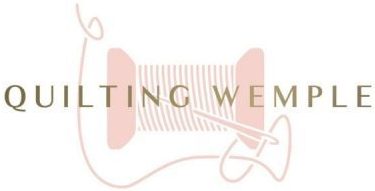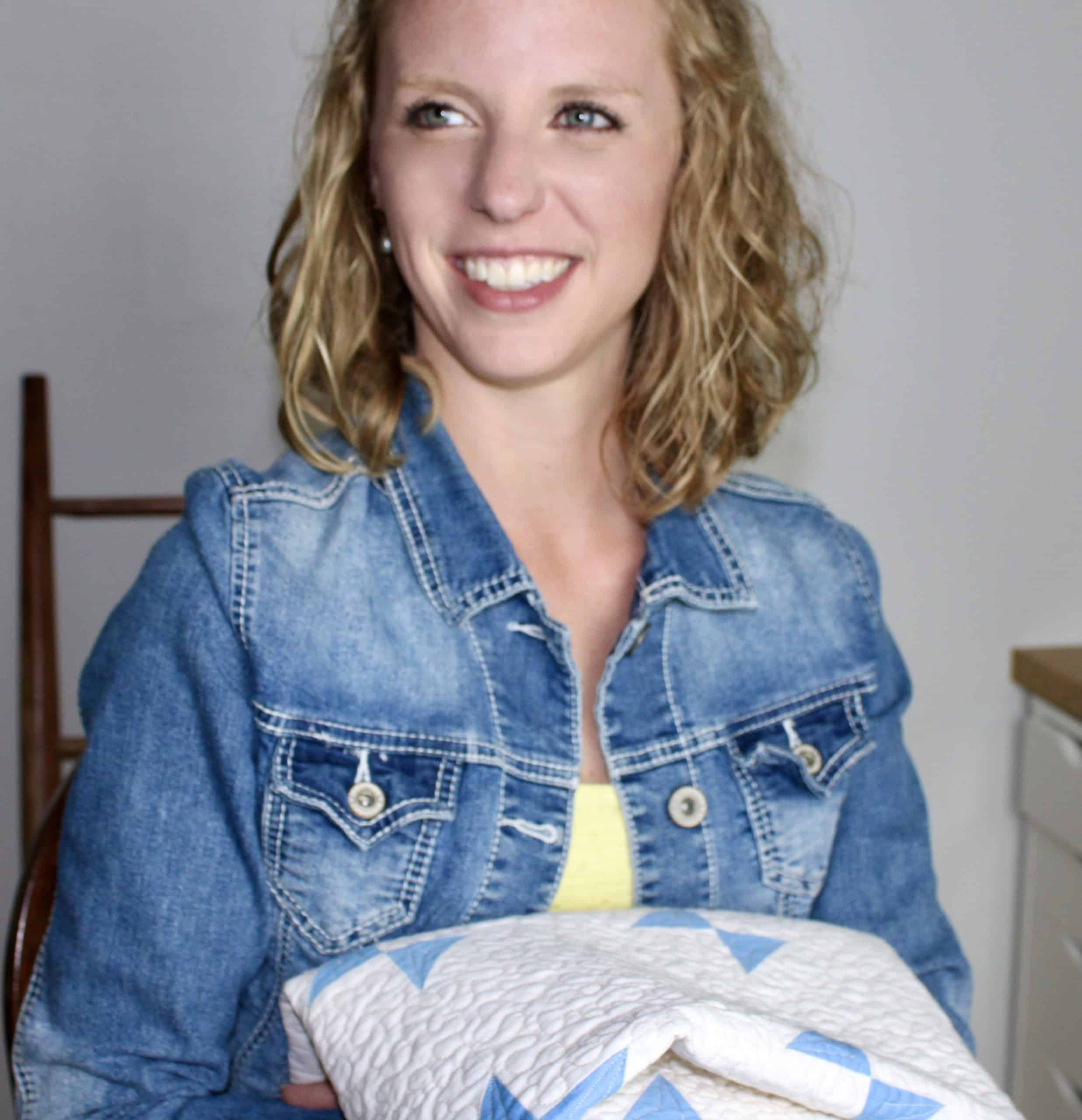So I have a relatively short attention span.
If I give myself a natural stopping point in my quilting, you know, those points where you have to break thread, I WILL walk away.
“Whoop, laundry’s done, might as well change it over” or “Man the dishes in the sink downstairs are calling my name”
Or the worst offender of them all, “I could really use some coffee right now.”
Why am I telling you this? Because if you’re anything like me, you end up with a lot of quilting plans that have straight lines in them which usually lend to using a walking foot.
Problem is when you are quilting short straight lines that don’t span the full length of the quilt, you get a lot of starting and stopping which gives you no less that 82743 coffee breaks as you work on the quilt. That many coffee breaks can draw out the quilting process by days or weeks and becomes tedious very quickly. Not to mention over-caffeinate you very quickly.
While I love coffee, I also love a finished quilt with minimal frustration and tediousness. So today we’re talking about straight line quilting WITHOUT a walking foot, opting instead for its cousin FMQ, and how to practice this essential skill so you can keep your sanity.

Free Motion Quilting Straight Lines
I already mentioned it a bit however when you are quilting shorter straight lines (not running the full length of the quilt) you often have a lot of starting and stopping.
A great example of this is this double wedding ring quilt I completed last year. I was on a time crunch to get this project done before the wedding but no WAY was I just quilting straight lines over those beautiful rings. I needed just a little extra OOMPH for all the effort I put into the rings.
So I opted for echoing the rings and running straight lines across the quilt that didn’t actually run over the rings. This gave me a super fun look where it looked like the rings were floating on top of the lines.
Problem is, those straight lines had to start and stop every time it hit the edge of the ring. By using a walking foot, the tedious effort of starting and stopping almost killed me (not to mention left a million threads to bury).
Half way through I switched to a free motion foot opting to do my straight line quilting without a walking foot, and I was able to complete an entire section of lines just zig zagging back and forth without breaking thread in less than half the time, and in the process, reduced all frustration in the quilting design.
Although there are a million and one tutorials on how to quilt straight lines WITH a walking foot, it was tough finding anything on how to straight line quilt without a walking foot. Since it’s definitely its own skill worth it’s weight in gold (if it had weight) I knew it was time to do a tutorial to go over how you can practice this skill too!
If you are just getting started with FMQ, be sure to check out these other resources we have first to get acquainted with the technique before worrying about a specific design:
FMQ, What is it and how to get started
7 Hacks for Free Motion Quilting
7 Free Motion Quilting Myths
How to straight line quilt using your FMQ foot
The problem is, straight line quilting without a walking foot requires free motion quilting, and when the quilt can go in any direction, it can be a bit of a project to try and master.
But with only two rules to follow, as well as some practice, you’ll be quilting short straight lines in no time.
There are really only two tricks to getting this right:
- Quilt with your arms not your torso.
- Watch where you want to go, not where you are.
What on earth does that mean. It sounds like a bad fortune inside a fortune cookie as I read it again.
Let me explain.
Quilt with your arms, not your torso
When a slight shift in any direction can cause you to have a bent line, an even feed of the quilt through the machine will help it from rotating in either direction.
When you are quilting swirls or curvy designs its common to sway with your upper body in order to “get in the groove” of the design. With straight line FMQ, it’s a very different kind of groove, intense focus on getting that line straight(ish).
Swaying with your torso is a recipe for a curved line, or one that veers off of the path and ends up at a different end point than you intended.
When you are FMQ straight lines, both hands need to push the quilt at the same speed.
You can find a great tutorial of this by Man quilting on YouTube here!
Just like normal FMQ, how fast you push and how fast you run the pedal need to be coordinated to get a consistent stitch length. However with straight line quilting, both hands need to push at the same speed as well so you don’t accidentally rotate the quilt by pushing harder with one hand compared to the other.
The easiest way to get a straight line is to isolate your arm movements from your torso. You want your torso to stay still and use ONLY your arms to push or pull the quilt. You don’t want to be pushing by leaning into it.
Watch where you want to go, not where you are

The second part of FMQ straight lines requires knowing where you want to go, and watching the point where you want to end up, not your needle.
I like to think about it this way, you don’t stare at your feet when you walk, you look at where you are headed. FMQ straight lines is very much the same.
Find the exact point where you want to end and don’t take your eyes off of it. As you push the quilt in the direction of that spot, watch that point and make sure it goes towards the needle you can see in your peripherals.
Its much easier to spot the needle in your peripheral vision than it is to spot an imaginary spot somewhere else on the quilt in your peripherals.
Just like when you stare at your feet as you walk, if you stare at the needle, you’ll be wobbling the entire way there, overcorrecting as you go. By watching the point that you want to end up at, you are much more likely to get a smooth and straight-ish line.
Common FMQ straight line quilting problems and how to fix them
Who knew quilting a straight line was really that hard?
Free motion quilting any design, regardless of whether it’s a fancy feather, or a simple straight line. You’re bound to run into some problems. Here are a few that you’ll likely run into with straight lines:
Corners aren’t sharp
One of my favorite straight line meanders (included in the practice exercises) takes random turns to meander in different directions.
When starting out quilting straight lines, you’ll find that a lot of times, those corners don’t come out as sharp and pointy as you intended.
You can get so used to getting in the flow of free motion quilting that its hard to force yourself into that isolated movement where need to feel like you are jerking the quilt around instead of free flowing.
As a result corners end up more rounded than pointy.
Instead try stopping for a beat right in the corner, taking an extra stitch, and then move off in your new direction.
The extra stitch will give you that pointy corner and you’ll be on your way.
Lines aren’t straight
We talked about this a little bit earlier, but:
Focus on whats controlling your quilting. Is it your body? Or your arms. Don’t push forward with your torso or you’ll end up with lines more wavy than straight.
Lines don’t end where you intended
When in doubt, mark your quilt!
Often times you’ll find that you get so focused on just getting the quilt through the machine that your quilted line actually ends up off in left field, no where near the point you intended it to land. Straight or not.
If you find yourself struggling to manipulate the quilt so much that you aren’t landing where you want, mark the line before you start to quilt it. Automate “knowing where you are going” that way you don’t have to worry about so many things at one time, all you have to do is follow your marked line as you wrestle the quilt.
Related:
How to Mark Your Quilt – 6 Right Ways and 1 Wrong Way
Practice exercises for free motion quilting straight lines
Putting in the reps and practicing this very different form of free motion quilting is the best way to get it down pat. Once you get the hang of it though, your quilting efficiency will go through the roof and you’ll find short straight line quilting significantly quicker and more enjoyable.
When I was learning, I looked high and low for practice exercises to learn straight line quilting without a walking foot. I wanted to make the process fun and interesting and unfortunately came up short, it got me frustrated because I didn’t want to just doodle a straight line on fabric over and over again.
Instead I decided to make my own exercises so I could accelerate the learning, have fun doing it, and start applying straight line FMQ to my machine quilting.
And now I’m sharing them so you can use them too 🙂
New to the Quilting Wemple shop is the Straight Line FMQ Practice Exercise Template Bundle. These four quilting templates are specifically designed to mark out 4 different practice exercises for FMQ straight lines.
Trace or mark them on to a quilt sandwich and start practicing those straight lines! No printing or stitching through paper required.
Practice straight lines, corners, moving in different directions, as well as basic straight lined shapes in each of these exercises to become a pro at this free motion quilting skill in no time.









0 Comments